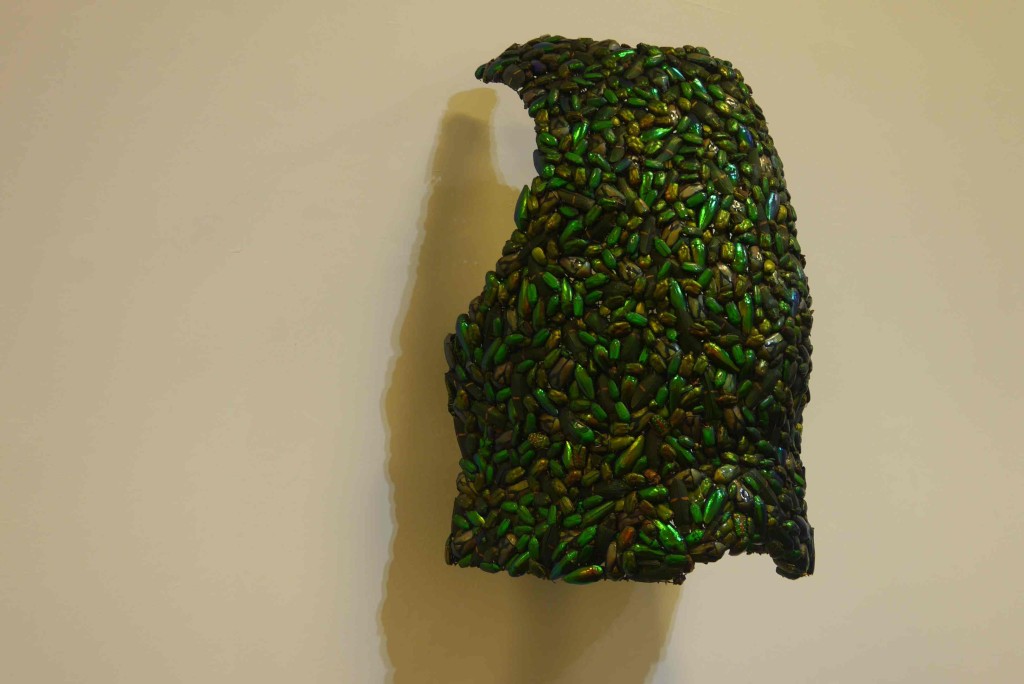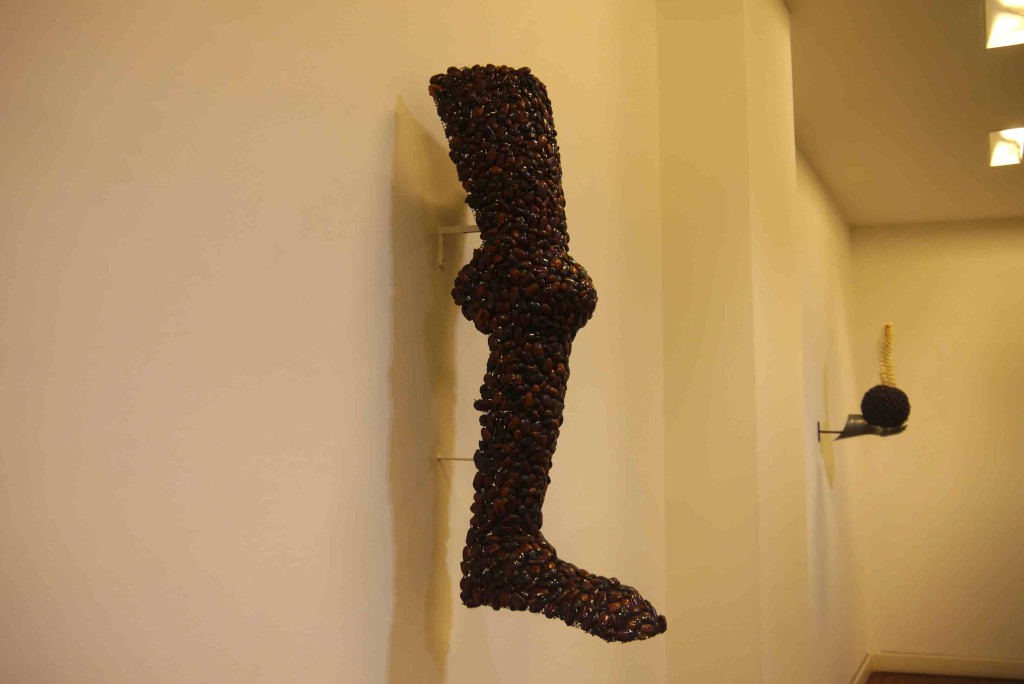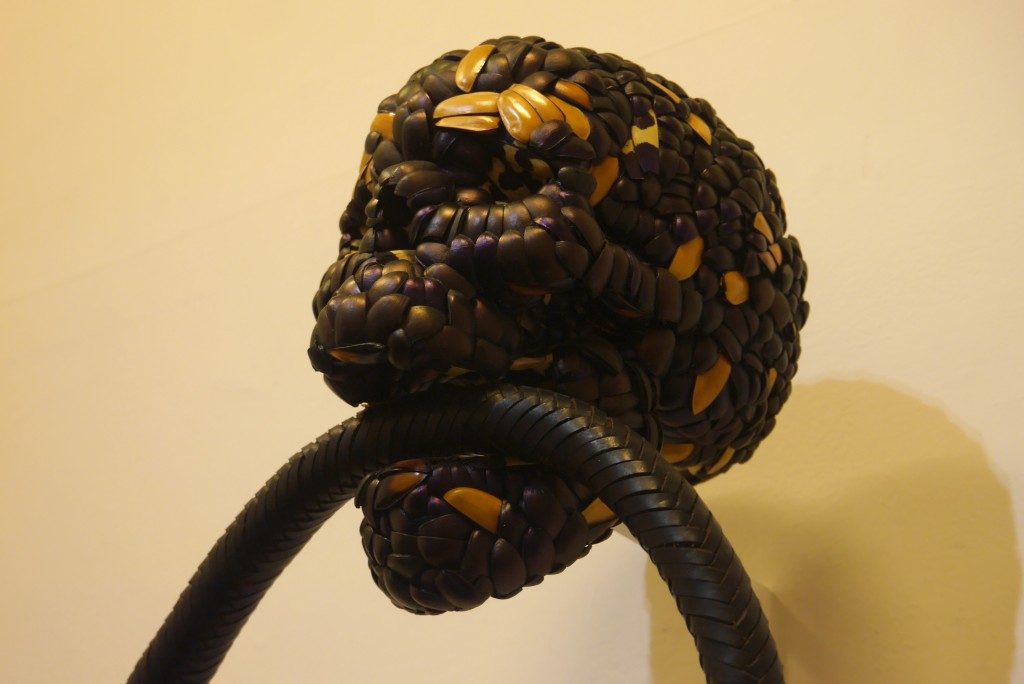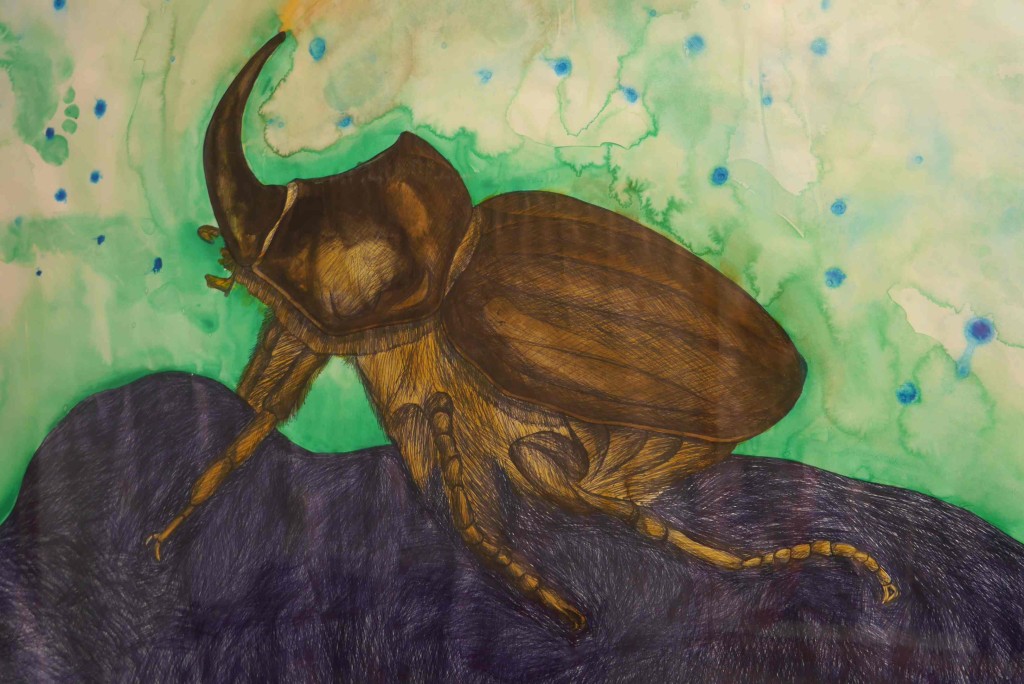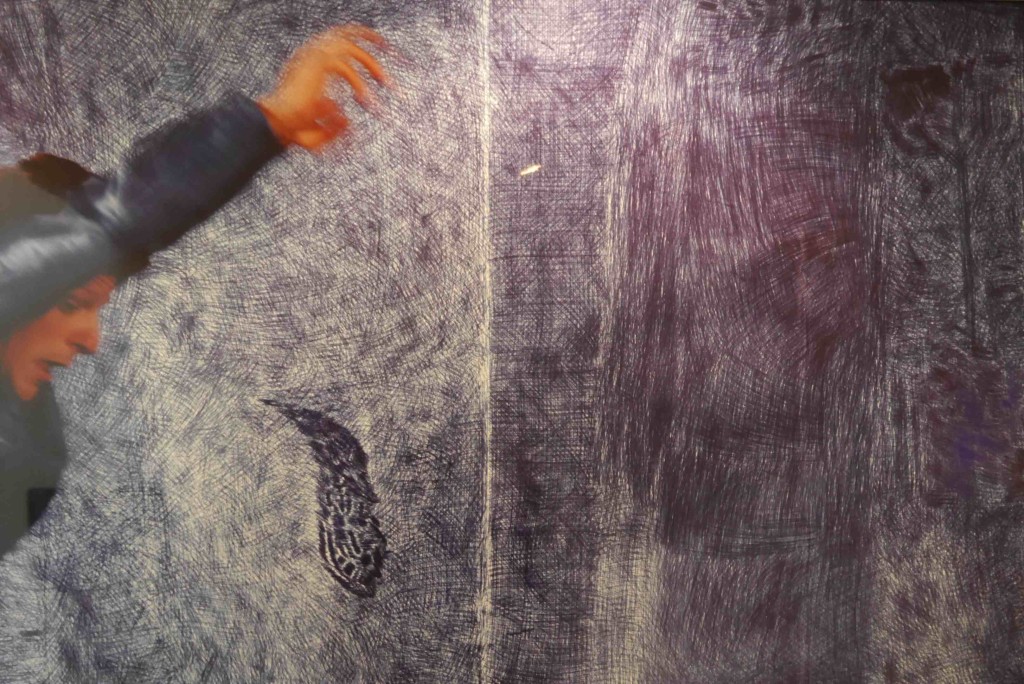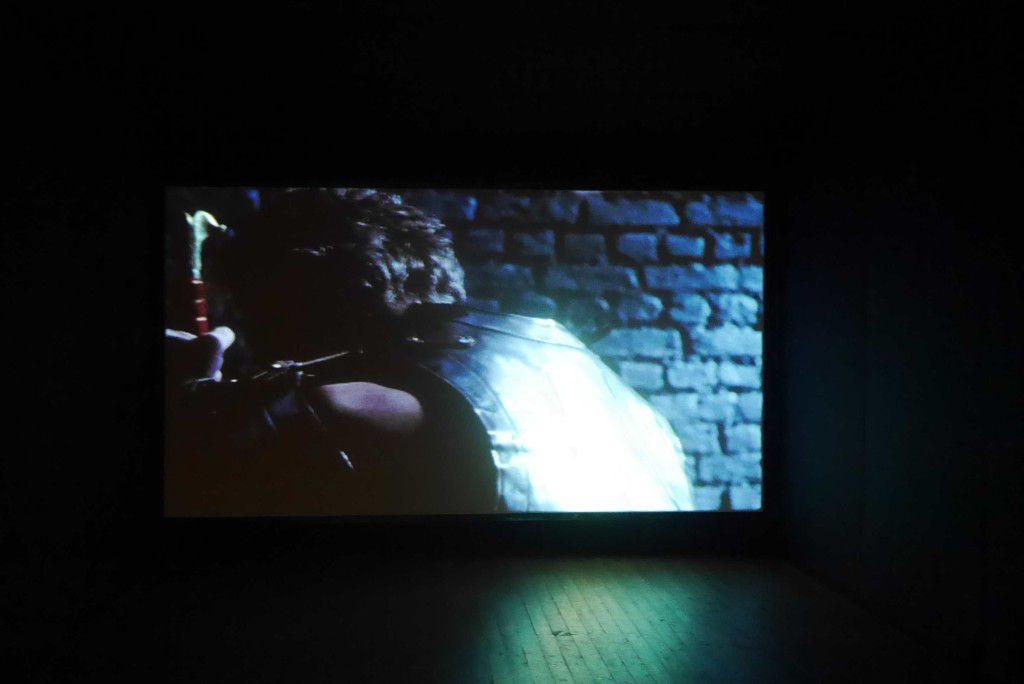Event
« Knight of the night », rencontre avec l’artiste Jan Fabre
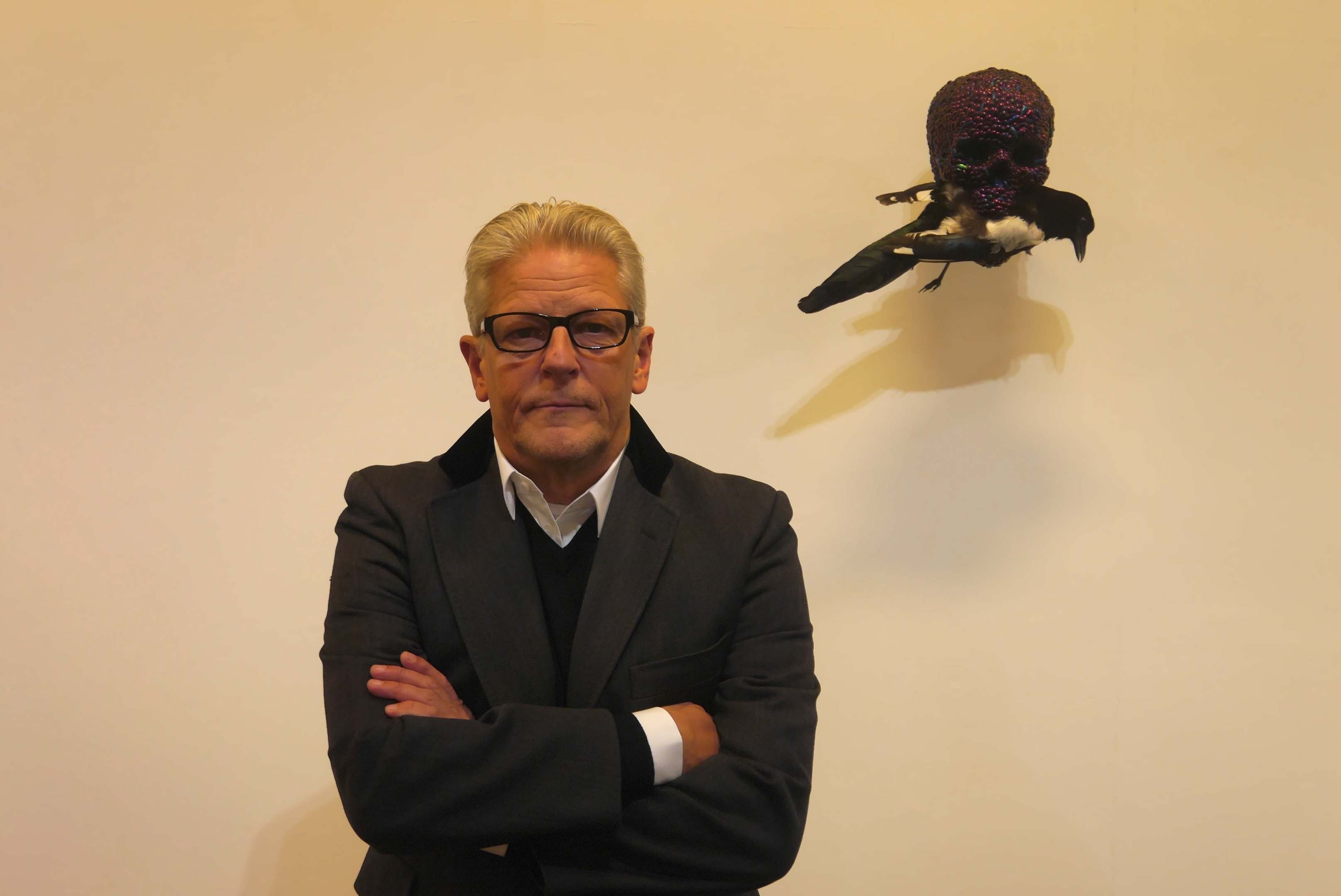
Le ELLE Ukraine m’a envoyé en mission vendredi dernier rencontrer pour eux l’artiste international Jan Fabre qui expose à Florence Galleria Il Ponte. Un travail que j’ai pris extrêmement au sérieux (vous connaissez mon côté bon élève et stabilo) assise entre un critique d’art et le photographe de la Repubblica (je ne faisais pas la maligne). Voici en ANGLAIS et en FRANÇAIS l’article paru aujourd’hui sur le site du ELLE.
——————————-
L’artiste belge aux multiples casquettes Jan Fabre expose à Florence dans la Galleria il Ponte « Knight of the Night », un ensemble d’œuvres couvrant la période 1997-2013 et regroupé sur le thème inédit du chevalier. Crânes et armures recouverts de scarabées, vidéo performance de l’artiste en chevalier, cette exhibition permet de couvrir différents thèmes qui lui sont chers et de redécouvrir des créations profondément personnels.
Difficile pour Jan Fabre de ne pas évoquer l’inspiration qu’il trouve dans la peinture flamande (Bosch, Van Eyck, Van Dyck, Rubens). Pour ces chevaliers de la nuit, les primitifs flamands et leurs forteresses, ont joué un rôle important. Le concept de chevalier le ramène à son enfance, à des jeux et à un imaginaire qui le poursuit encore aujourd’hui puisqu’il devient lui même, via son travail d’artiste, un « protecteur du concept de beauté ».
il devient lui même, via son travail d’artiste, un « protecteur du concept de beauté »
L’armure est omniprésente dans cette exposition et chaque élément (jambière, torse) est intégralement recouvert de scarabées colorés. Cet animal est un symbole omniprésent dans son œuvre et ce fan d’entomologie (il a recouvert le plafond de la galerie des glaces du palais de Bruxelles avec plus d’un million de scarabées) crée de magnifiques dégradés de couleurs grâce aux carapaces scintillantes.
La carapace comme l’armure renvoie à un fil rouge de son travail : le concept de peau. D’un côté avec l’objectif (évident) de la protection contre toute forme de souffrance, mais également pour laisser parler l’âme en séparant l’intérieur de l’extérieur, l’armure fait office de mur. Jan Fabre approfondit même l’origine de cette idée en évoquant son enfance catholique, son apprentissage de la foi. Le personnage de Jésus lui-même, qui souffre, qui meurt, représente cette vulnérabilité contre laquelle il veut lutter, allant vers une vision utopique de l’homme du futur, armé d’un squelette nouveau.
Enfin, il ne faut pas oublier que Jan Fabre est un artiste total. Sculpture, dessin, écriture, théâtre, danse … il est habitué à utiliser toutes les expressions qu’il a à sa disposition. Il aime particulièrement expérimenter physiquement les concepts sur lesquels il travaille et la vidéo Lancelot (2004) inclut dans le parcours, présente un combat de l’artiste en armure luttant jusqu’à l’épuisement. Pousser les limites physiques (il aura du mal le lendemain du tournage à marcher) lui permet d’aller au delà de ses propres idées, du rationnel, le corps restituant des émotions bien supérieures à celles anticipées.
il faut une vie entière pour devenir un « jeune artiste »
Quand pour terminer la rencontre nous demandons à Jan Fabre en quoi est ce qu’il souhaitait être métamorphosé (la métamorphose, encore un thème de prédilection), il nous répondra le regard rieur qu’il souhaitait être postier puis chimiste quand il était petit et qu’il faut une vie entière pour devenir un « jeune artiste ». On décrit souvent Jan Fabre comme un provocateur, mais soyez certains que c’est une conséquence de son esprit génial et non une motivation.
Adresse : Galleria il Ponte, via di Mezzo, 42, 50121 Firenze
+39 055 240617, 2 octobre – 18 décembre 2015
———————————-
« King of the Night », Jan Fabre
The multiple disciplines Belgian artist Jan Fabre exhibits a collection of works covering the period 1997-2013 in Florence’s Galleria il Ponte. The show “Knight of night” is centered for the first time around the theme of the knight. Skulls and armor covered with scarabs, video performances, this exhibition allows to cover various thematic that are precious to him and rediscover the deeply personal creations.
The guardian of beauty
It’s hard for Jan Fabre not to suggest inspiration from the Flemish painting (Bosch, Van Eyck, Van Dyck, Rubens). For these knights of the night, the Flemish primitives and their fortresses play an important role. The concept of the knight recalls to his childhood, to the playtimes and to an imagination that he continues to pursuit even today because it becomes himself, through his work as an artist, a “guardian of the concept of beauty”.
Skin and scarabs
The armor is omnipresent in this exhibition and each element (Cuisse, Cuirass) is fully covered by colored scarabs. This animal is a central symbol in his works, also because he is a fan of entomology, creating magnificent color gradients thanks to the glistening carapace. He pushed his concept till covering the ceiling of the halls of mirrors in the Brussel’s palace with more than one million of scarabs… The carapace, just like the armor, refers back to a thread of his work: the concept of skin. On one side, the obvious objective of protection from all forms of pain, on the other separating the inner with the outer self to let the soul express itself. The armor becomes like a wall. Jan Fabre goes in depth referring to his Catholic childhood. Jesus Christ himself, who suffers and dies represents this vulnerability which the artist wants to battle against, going towards a utopic vision of the man of the future, armed with a new skeleton.
Body and mind
It is important not to forget that Jan Fabre is an all rounded artist. Sculpture, drawings, writings, theater, dance … he is accustomed to use all the means he has at his disposal. He particularly loves/needs to experiment physically the concepts he is working on. In the Lancelot video (2004), the artist duels with himself fully dressed in armor until exhaustion. Pushing his physical limits allows him to go beyond his own ideas and rationality, because the body give back emotions stronger than anticipated.
Metamorphosis
When to close off our interview we ask Jan Fabre in what he would like to be metamorphosed (the metamorphosis is key to read his art), he replies with smiling eyes that when he was little he wanted to be a mailman and chemist. Taking a long drag of his cigarette, he will confess, humble, that “you need a whole life to become a young artist”. We often describe him as a provocateur, but it’s definitely more a consequence of his genius mind rather than a motivation.
Par Ali
Poursuivre le voyage...
Nos adresses art et culture à Florence
Cecilia Cosci, renaissance contemporaine
Nos adresses art et culture à Florence
Musée Sant’Orsola, un futur pour l’art contemporain à Florence
Nos adresses art et culture à Florence
